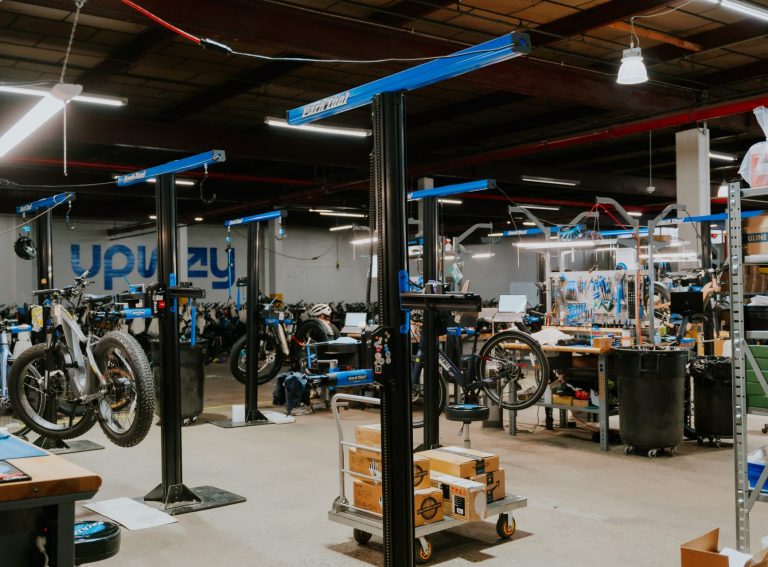Sustainable last-mile logistics company Delivery Mates has completed 1.2 million deliveries in the last six months, according to its Impact Report for the first half of 2024.
That’s a 15% year-on-year increase. In H2 next year, the firm reckons it will reach two million deliveries.
A growth in deliveries means more distance travelled, right?
Wrong.
In the last six months, Delivery Mates has reduced its miles travelled by 45%. These efficiency gains have been made possible by bringing cargo bike delivery riders closer to the customer’s door.
In total, the company has prevented more than 63,000 kilograms of CO2 entering the atmosphere, 195,000 grams of NOx emissions, and nearly 4,000 grams of PM2.5 particulate matter. That’s the equivalent of a year’s worth of electricity for 13 homes, 74 acres of forest, or charging 4.1 million smartphones.
So how is Delivery Mates upping its deliveries while travelling less?
The answer is hyperlocal microhubs.
Why hyperlocal microhubs mean shorter journeys
According to Delivery Mates’ Chief Operating Officer Kevin Savage, it is essential to reduce the number of miles travelled to ensure the commerciality of sustainable logistics.
“If we can cut the distance travelled for our deliveries, then we need less time on the roads and have more time to make more deliveries and meet market-competitive rates,” Kevin tells Zag Daily
Behind the 45% slash in distance travelled are six hyperlocal microhubs operating in the UK – five in London and one in Glasgow. With a headquarter depot in London’s Bermondsey district, the goods can be transported into this larger site using electric vans before cargo bikes complete the rest of the journeys across London.
The microhubs also mean that local cargo bike riders can respond to on-demand orders and deliver the goods to the customer’s door without the parcel ever needing to go through the Bermondsey facility.
“It’s becoming a complex network around London, but one that’s necessary,” says Kevin.
Necessary indeed – it’s not uncommon for a Delivery Mates rider to travel just 0.14 mile between deliveries.
The multi-customer nature of microhubs is Delivery Mates’ “playbook” feature for maximising commerciality. All five microhubs in London are multi-customer meaning each site serves various customers while operating 24 hours per day, leading to less down time.
“To achieve the economies of scale that the market is asking for, microhubs must be multi-customer.”
A hindrance for microhubs
Delivery Mates aims to have 12 microhubs operating by the end of 2025, four of which will mimic the Bermondsey facility and serve three nearby sites.
Kevin says the company would have achieved that goal by the end of this year if it wasn’t for a lack of property made available by the government.
“If governments and councils really want to decongest their cities, then they have a fair amount of property they need to release for a microhub to consolidate into.”
A microhub would need about a 1,000 square foot plot of land, which is a fraction of what a bus station needs.
“My call is to make that available for not only passenger transport but for freight transport too.”
British real estate firm Savills found that the UK take-up of logistics and industrial space dropped 40% in 2023 from 2022, and Kevin believes that this is being replaced by retail and residential properties.
“If you’re a developer, then you’ll be tempted to develop upwards with a block of flats because the return on your investment is huge,” Kevin says. “However, you can make that same block of flats with a microhub underground, which can then be a suitable area for getting freight in and out of that same building.”
Kevin calls for microhubs to be included from the start of the planning permission process, as converting retail spaces for example can be difficult as they’ve not been designed to fit cargo bikes in and out of the shop front.
“The Department of Transport needs to have a sustainable freight policy in its portfolio which currently seems to be non-existent. There’s a lot in terms of passengers, and for the right reasons, but there’s not a great deal written on sustainable freight.”
Expanding beyond borders
Delivery Mates is aiming for one microhub in every UK city, but the goal is to go international too.
The logistics company already operates last-mile logistics in Italy and Spain using electric vans, and runs cargo-bike operations in Paris and Amsterdam.
Next year, it’s set to launch in Barcelona, Madrid and Milan, initially beginning with electric vans before transitioning to cargo bikes.
While cargo bikes are an end goal for green logistics, Kevin believes they’re not the only solution to meeting a city’s sustainable needs. “Cargo bikes offer an ease to parking and using bike lanes, but that depends on the geography you deliver to and the infrastructure it has.
“Somewhere like Amsterdam for example is known for its cycle lanes, but that infrastructure isn’t there in many other European cities.”
The best solution for Kevin is cargo bikes followed by e-vans and e-scooters, and Delivery Mates is even working on high-density walkers to transport deliveries around local neighbourhoods.
“There’s a great cycling culture across mainland Europe, which we don’t necessarily have in the UK,” Kevin says. “We are getting better though with more cycle-to-work schemes, and the recent cargo bike cruise we saw in London for example.
“We have some Victorian infrastructure in our cities that will take some time to integrate green logistics, and it may be harder for the UK to match the speed of progress in the rest of Europe. But who knows, maybe I’ll be wrong.”





